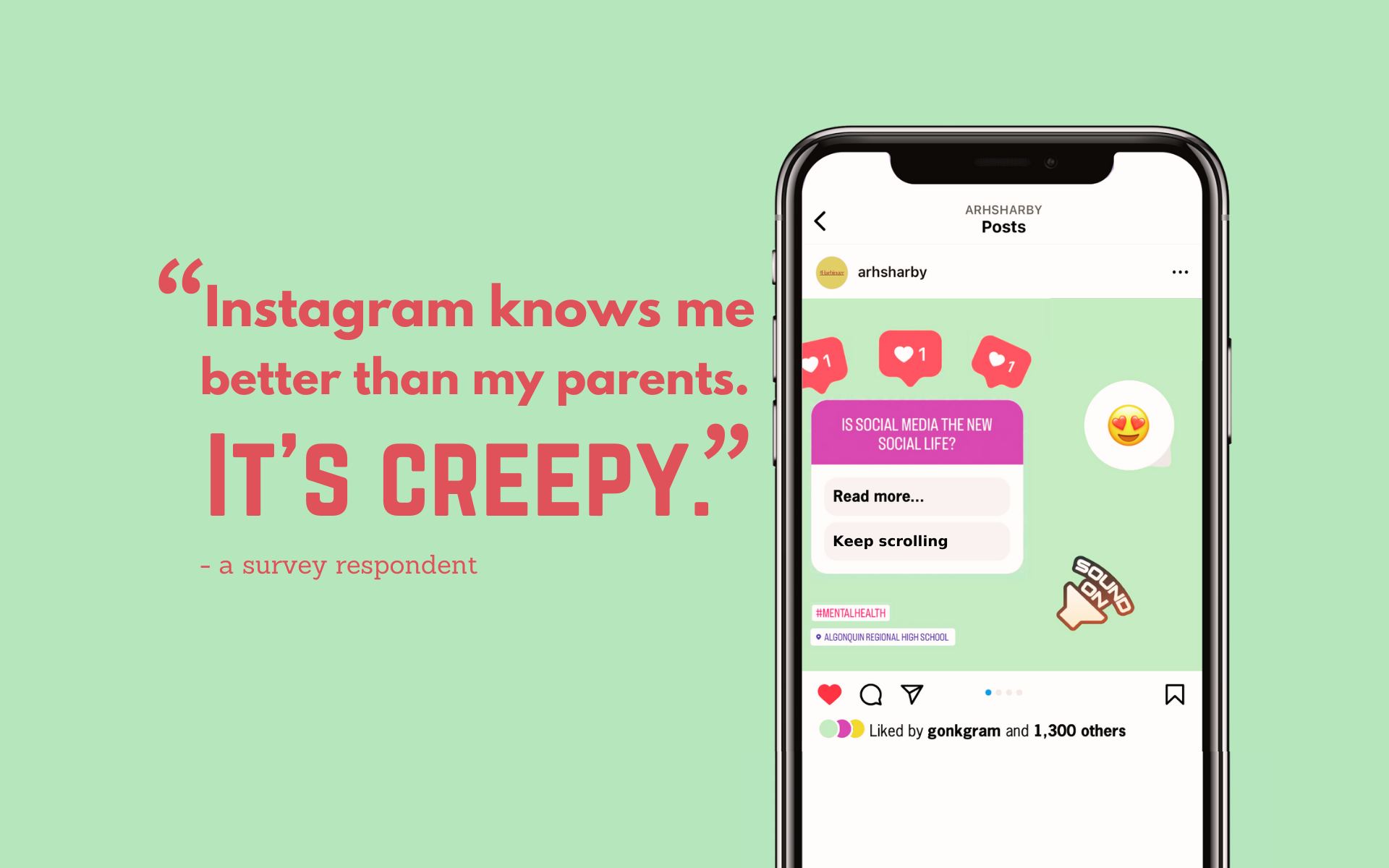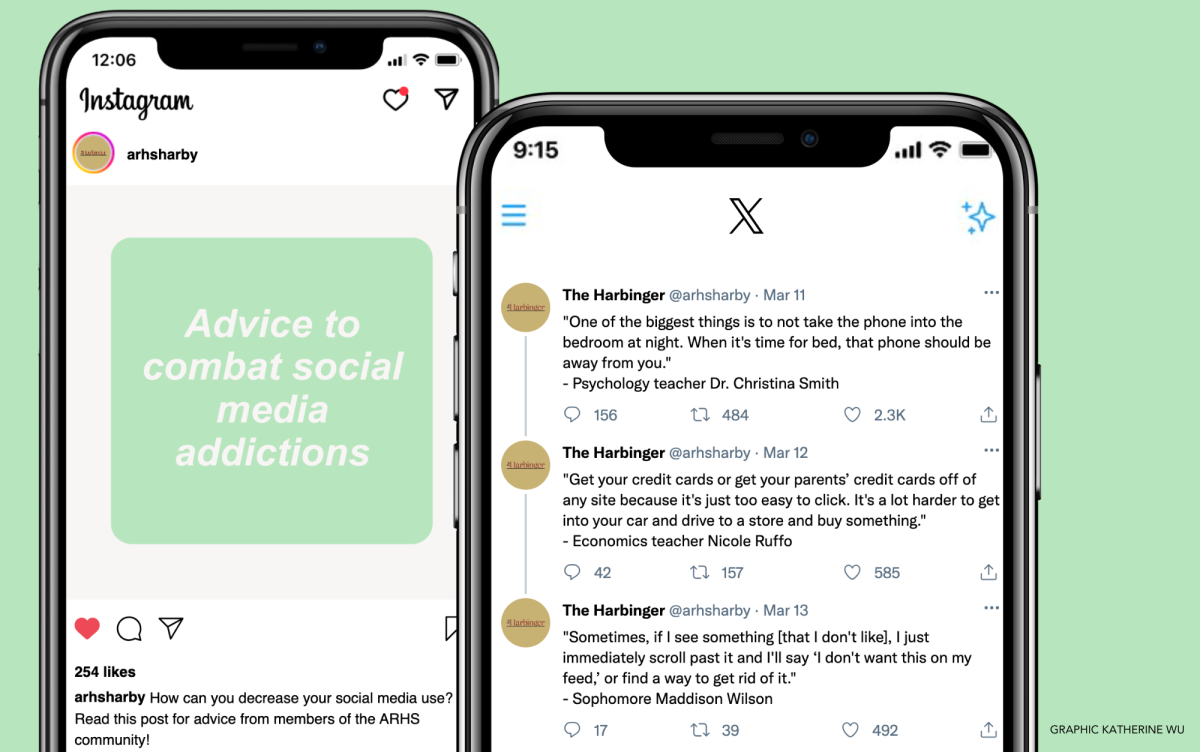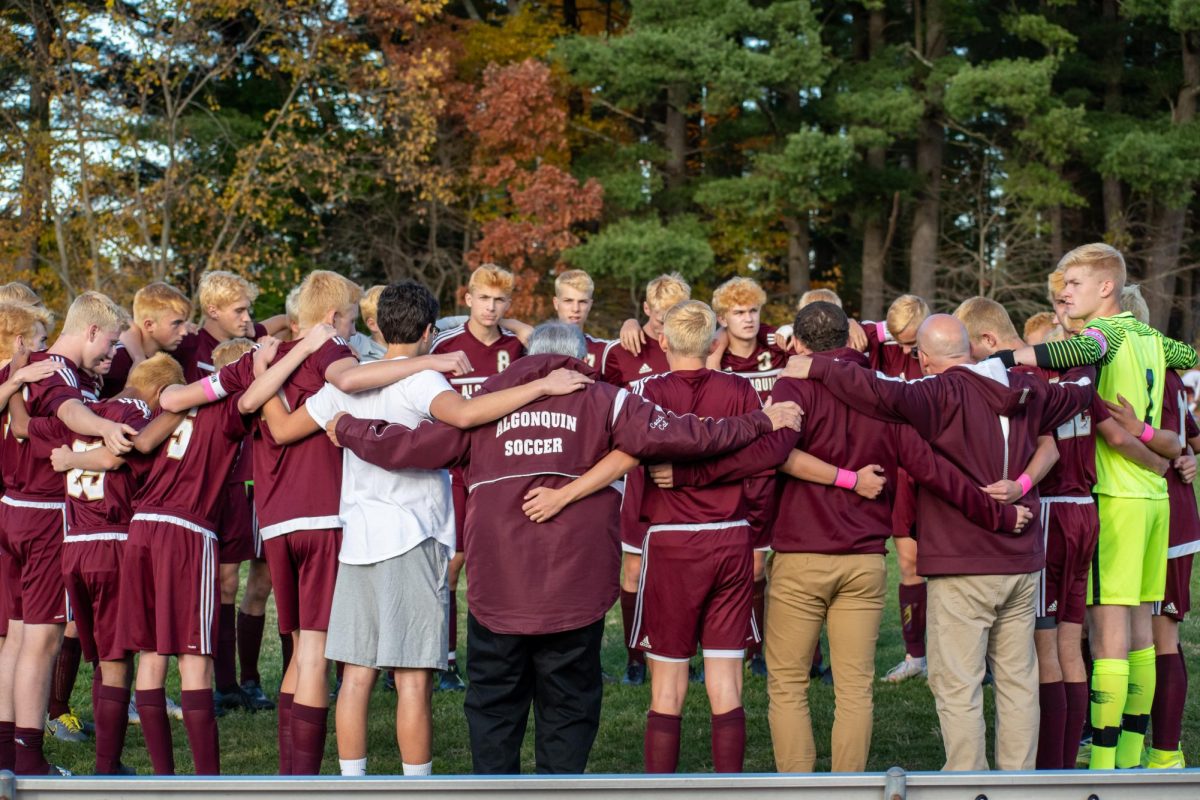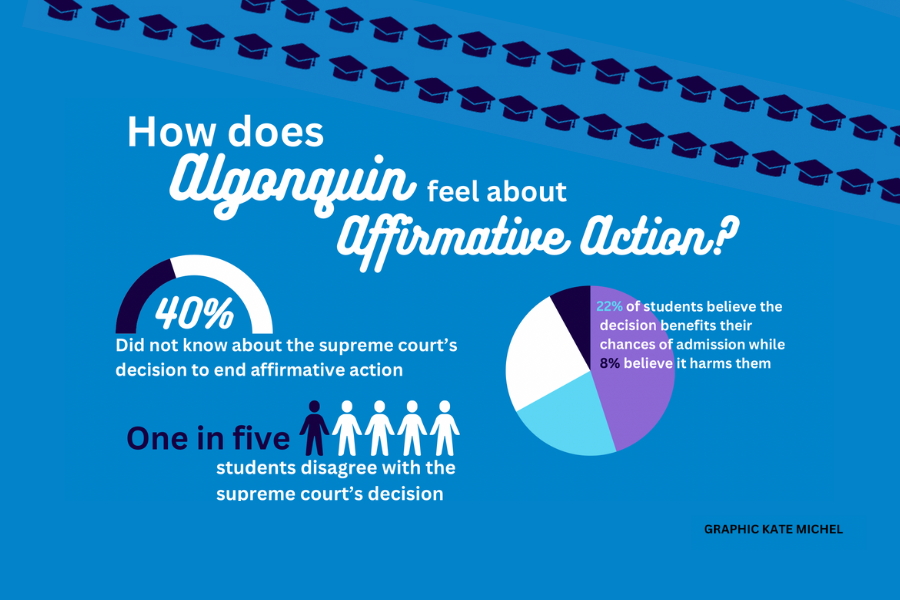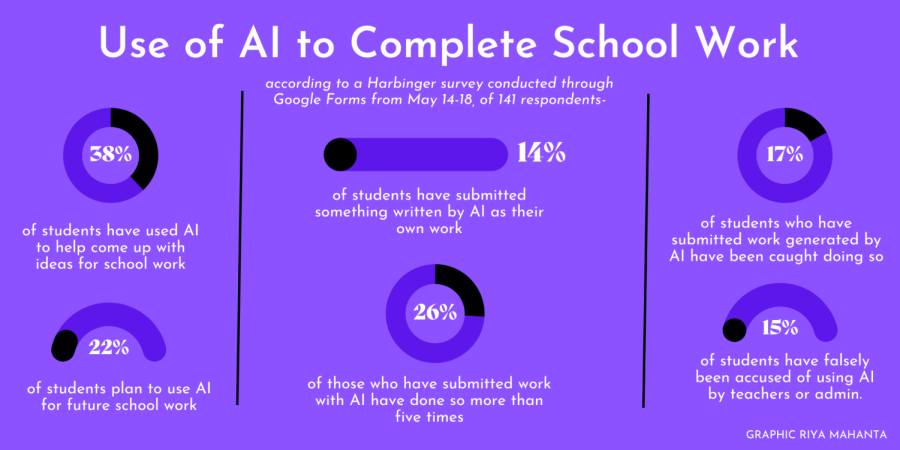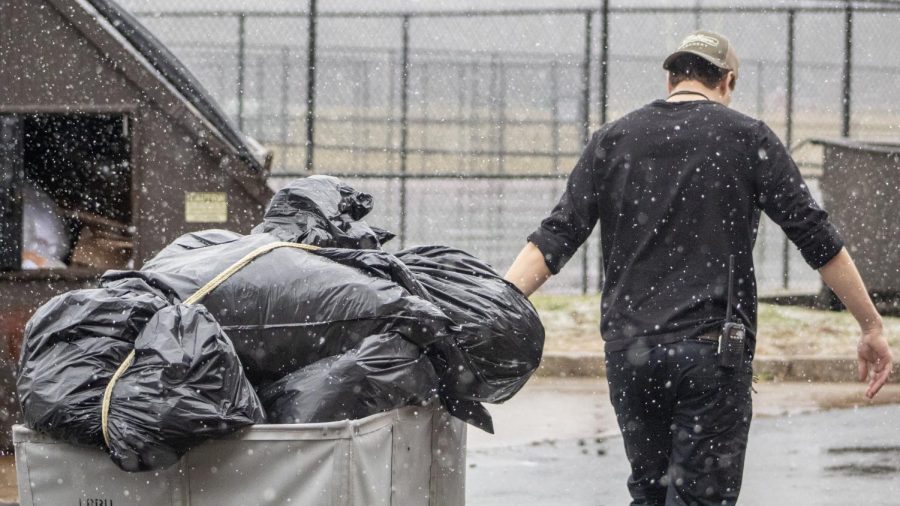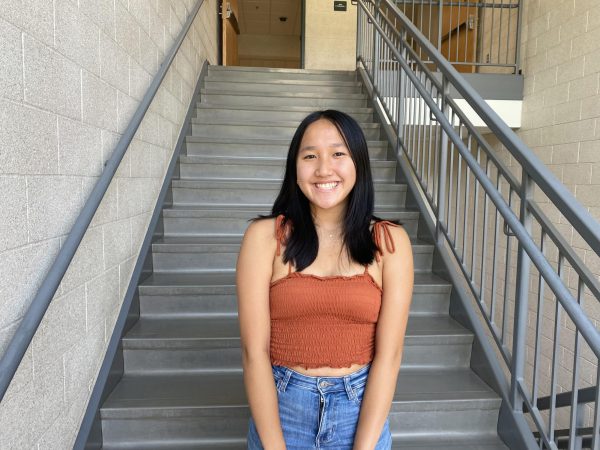“There’s a world outside that I’m not living in,” one respondent said.
“I wish I could entertain myself in more ways than being online, but I don’t really have it,” another student remarked.
“I spiral into doom-scrolling, which is alarming because it distracts me from my priorities and generally makes me feel icky about how I squandered my time,” yet another survey respondent said.
According to a Harbinger survey of 144 students conducted via Google Forms from Oct. 18 to Oct. 22, 32% of respondents check social media over 16 times a day, 13% check social media 11-15 times a day and 26% check 6-10 times a day. In contrast, only 6% of respondents never check social media.
In the era aptly labeled the “digital age,” social media has become an integral part of students’ lives, helping them stay connected with friends, up-to-date with news and enjoy the content posted by a variety of digital creators. However, student relationships with social media reflect a complex love-hate dynamic, where the allure of connectivity coexists with the challenges and struggles posed by these virtual worlds.
Favorite parts of social media
With the rise of social media, various platforms have emerged, resulting in a wide variety of influential content for teenagers to consume.
“I find [social media] fairly positive with some negative aspects, but I’m on social media quite often,” junior Alex Karasoulos said. “Most weeks my screen time average is six to 11 hours, so that’s quite a lot.”
According to the survey, 17% of respondents have accounts on over seven social media platforms, and 28% of respondents use four to six social media platforms at least once a week. Due to the variety of options available, some students favor the apps that cater the most to their interests.
“Reddit [is my favorite social media app] because I like the writing prompts and the cats and dog subreddits,” one survey respondent wrote.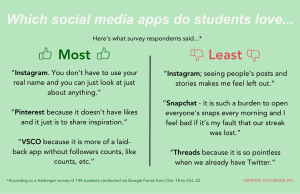
Other students prefer certain apps for the convenience offered.
“Snapchat is less serious than texting so I’m able to communicate with more people,” another respondent wrote.
Freshman Brianna Belanger finds the browsing aspect of social media most important.
“I would say that I mostly just watch videos,” Belanger said. “I don’t really post anything, and then I don’t really comment on anything. It’s mostly just seeing what’s online, although I do use social media a lot.”
Another benefit of social media is the ability to meet others.
“I think overall [my social media use is] positive because it gives me a connection with like-minded people,” Karasoulos said. “I’ve moved around a lot of my life so it’s hard to stay grounded to people in a certain area, so I can find people on social media and travel around and go meet up with them; it’s a wonderful way to find people with similar interests.”
In addition to using multiple apps, many students find themselves spending a significant amount of time on social media each day. Thirteen percent of survey respondents spend over four hours on social media each day, while 16% of respondents spend three to four hours daily and 19% spend two to three hours on social media.
Although social media can be time consuming, some students feel that a dependence on technology is now ingrained into our society.
“I think in today’s world it’s okay to spend a few hours a day on our phones because that’s just life now,” one respondent wrote.
Social Media addictions and downsides
Despite many students’ constant use of social media, many recognize it can have a negative impact on their mental well-being. When asked to rank the impact of social media use on their mental health, 38% of respondents rated social media as having an impact of four or below on a scale of one to 10, with lower numbers correlating with a more negative impact. A similar proportion of students believe social media has a neutral impact on mental health, as 31% of respondents answered with a value of five.
Psychology teacher Dr. Christina Smith believes social media can be harmful, and that it is important for students to recognize the distinction between social media and real life.
“[Social media] promotes a culture of FOMO, or fear of missing out, that makes people feel left out,” Smith said. “It also portrays an unrealistic view at times of what life is. I think that can be challenging when people are maybe struggling and thinking about the things that they think everyone else is experiencing that they’re not.”
Senior Michael Mesidor finds it difficult to avoid making comparisons on social media.
“I remember there was a time, one or two years ago, I had to delete the [Instagram] app because I was constantly comparing myself to people I would see on the app,” Mesidor said. “I would say, ‘Oh, I would never be like them.’ Now I’m back on Instagram and I thought I was just ready to face perfection because I feel like the only thing you find on Instagram is just perfection or people doing amazing things, and it’s just not healthy.”
According to Economics teacher Nicole Ruffo, social media can be damaging from a financial standpoint as well.
“Back in the day, you’d have to get in the car and go into a store to buy something, and now all you have to do is press pay,” Ruffo said. “The opportunity for kids to get into credit card debt early and to make poor consumer decisions is so much easier now, unfortunately, because of social media.”
Many brands today utilize marketing strategies on social media to sell their products; one such strategy takes advantage of FOMO.
“I think there are, right now, 30 marketing strategies that social media uses to get you to buy the product,” Ruffo said. “[With] one in particular, called ‘eye candy,’ they just bombard teens with amazing pictures of goods and services using bright colors, flashing images, and they trick you into thinking that you need the product and you really don’t, and you click buy.”
Students have noticed social media’s use of tracking as well.
“Instagram knows me,” one survey respondent wrote. “Instagram knows me better than my parents. It’s creepy.”
While some students believe spending hours online each day is simply the new normal, Smith argues that social media use needs to be monitored to maintain a healthy balance in life.
“We spend so much time now on using technology, not just social media, to do our work, whether it’s schoolwork or work outside of school,” Smith said. “Then in our downtime, we are sometimes using these same technological devices to use social media where we can lose hours of our day. When we’re using technology so often, we might start losing contact with our physical, in-person relationships that are really important.”
“Everywhere I go, people are constantly on Snapchat, not paying attention to what they’re doing,” one respondent wrote. “Sometimes when I do group work with people, they constantly check their phones for notifications they get on Snapchat.”
However, although social media may distract from in-person relationships, several students feel conflicted because they feel it’s the only connection for other relationships.
“I feel that the more I use social media, the longer I stay on and interact with the platforms, and the more attached I become,” one survey respondent wrote. “It’s frustrating because I’m torn between leaving social media entirely or staying because I could lose contact with some people [if I leave].”
Other students agree about the dual nature of social media.
“It’s a double-edged sword; social media has the capability of connecting people and sharing good ideas with the world,” one respondent wrote. “Conversely, it can enable bad things to happen and can also allow for the spread of misinformation/unchecked negativity.”
Spending more time offline
Amongst students’ mixed experiences with social media stands a clear trend: according to the survey, 73% of respondents wish to spend less time on social media.
“I think we don’t need to be on social media as much and we need to work on our human interaction with those around us,” one respondent wrote.
However, limiting this usage isn’t as easy as it sounds due to the prominent role social media plays in students’ lives.
“[My social media use is] not necessarily an addiction, but I feel like it’s just so readily available,” sophomore Maddison Wilson said. “I feel like when I’m bored, I just immediately click on it.”
Some students have experienced the negative impact of social media on in-person interactions.
According to Smith, self-control is challenging but vital to spending less time online.
“You can try to do it [limit screen usage] yourself,” Smith said. “But that can be really challenging because we sometimes cheat ourselves. We trick ourselves or we tell ourselves something.”
Students have various methods to combat high usage of social media platforms, such as setting timers and putting their phones away while working. Yet, these methods are not always productive.
“I use a timer [to limit my screen time], but it’s not really effective because whenever I do something, going online or talking with my friends…I just ignore the timer and keep using it,” Mesidor said.
Many teachers also encourage limited use of phones during class time through various policies. For example, English teacher Emily Philbin has a device-free classroom where the majority of work is done on paper and if students repeatedly can’t refrain from using their phones during class time, they are kept away from the student in a “phone jail” for the duration of a term.
“Watching how often, since the pandemic, people are on devices, I thought it would be a good idea to take a break, but also within class, it’s so easy to get distracted by [devices], so I took them out of the equation,” Philbin said.
Smith also lessened the use of technology in her classroom this year. In addition, she recommends doing more of the little things to limit phone use, such as turning notifications off and keeping your phone away from your bed at night.
“I try to control my phone rather than my phone controlling me,” Smith said. “I would say try to lessen your time a little bit and see how it makes you feel. It might make you feel better.”
Ruffo also stresses the importance of being aware of one’s social media usage, especially as technology continues to advance and establish a bigger place in everyday life.
“We have so many courses here at Algonquin that you can take that will help you move through the digital world,” Ruffo said. “We have Digital Literacy, and kids should want to take those classes, because that’s the future…We have to do a better job educating students about digital life, whether it’s social, emotional or financial, because it’s the future and it’s scary.”



